CPC Definition - Subclass B64G
This place covers:
- Cosmonautic vehicles.
- Observing or tracking cosmonautic vehicles.
- Tools specially adapted for use in space.
- Space suits.
- Simulating cosmonautic conditions.
- Cosmonautics not otherwise provided for.
Attention is drawn to the following places, which may be of interest for search:
Apparatus for, or methods of, winning materials from extraterrestrial sources |
This place covers:
Satellites and other vehicles intended for use in space or on other celestial bodies.
Components specially adapted therefor.
This place covers:
Systems for launching spacecraft, e.g. rockets.
Space elevators.
Attention is drawn to the following places, which may be of interest for search:
Payload connectors | |
Separators | |
Rockets |
This place covers:
Launching using aircraft.
Illustrative example of subject matter classified in this group:
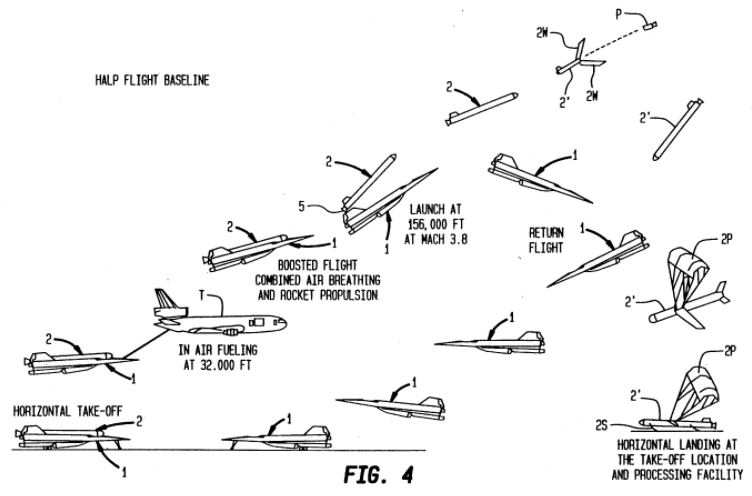
Attention is drawn to the following places, which may be of interest for search:
Flying units formed by separate aircraft | |
Aircraft transported by aircraft |
This place covers:
Rockets for launching spacecraft which are intended for multiple launches.
Attention is drawn to the following places, which may be of interest for search:
Space shuttles |
This place covers:
- Spacecraft characterised by the type or purpose.
- Shapes or forms of spacecraft.
- Satellite constellations.
This place does not cover:
Space shuttles |
Examples of places where the subject matter of this place is covered when specially adapted, used for a particular purpose, or incorporated in a larger system:
Radio transmission active relay systems using satellites |
Attention is drawn to the following places, which may be of interest for search:
Shapes or forms adapted for gravity gradient control |
Communication aspects of communication satellites are classified in H04B 7/185.
This place covers:
Satellites for providing navigation signals, e.g. GPS.
Attention is drawn to the following places, which may be of interest for search:
Navigation systems | |
Satellite radio beacon positioning systems |
This place covers:
Satellites for observing the earth, e.g. for surveillance, meteorology or cartography.
This place covers:
Illustrative example of subject matter classified in this group:
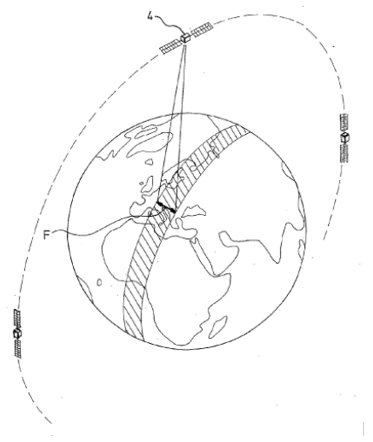
This place covers:
Spacecraft specially adapted for scientific research relating to the cosmos or microgravity environments.
This place covers:
For example, space telescopes.
This place covers:
Spacecraft which come to rest on the surface of celestial bodies other than the earth.
Illustrative example of subject matter classified in this group:
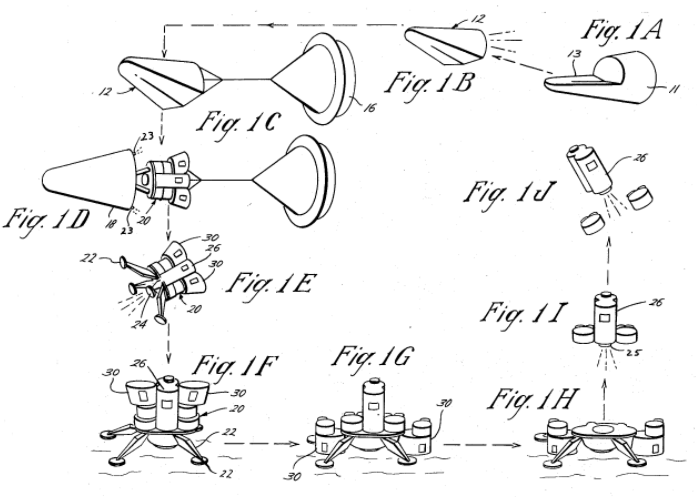
Attention is drawn to the following places, which may be of interest for search:
Planetary rovers |
This place covers:
Spacecraft for maintaining the position, attitude or operation of other spacecraft, e.g. space tugs or resupply.
Illustrative example of subject matter classified in this group:
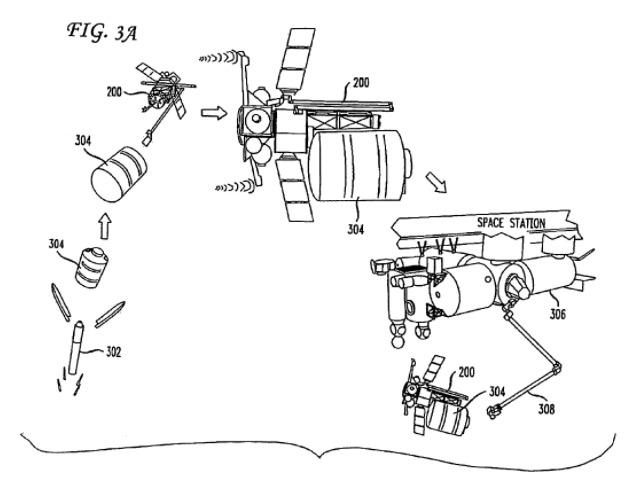
This place does not cover:
Refuelling in space |
This place covers:
Systems for clearing debris from orbit.
Illustrative example of subject matter classified in this group:
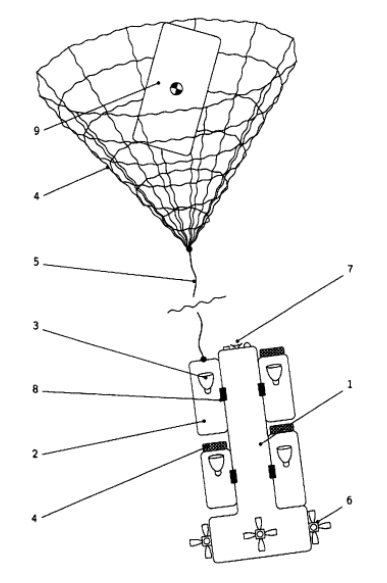
Attention is drawn to the following places, which may be of interest for search:
Rendezvous or docking of spacecraft |
This place covers:
Multiple satellites in orbit working together as a system.
Illustrative example of subject matter classified in this group:
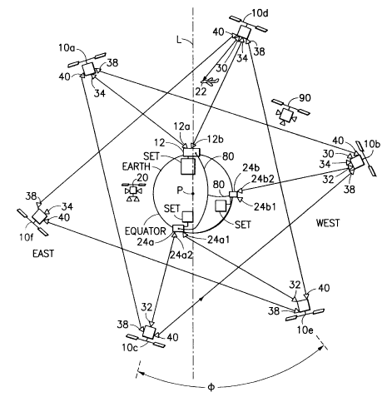
This place covers:
Reusable space vehicles for transportation between the earth and space.
This place does not cover:
Reusable launch rockets or boosters |
This place covers:
Manned or unmanned land vehicles specially adapted for use on other celestial bodies, e.g. Mars rovers.
Extraterrestrial air vehicles.
Illustrative example of subject matter classified in this group:
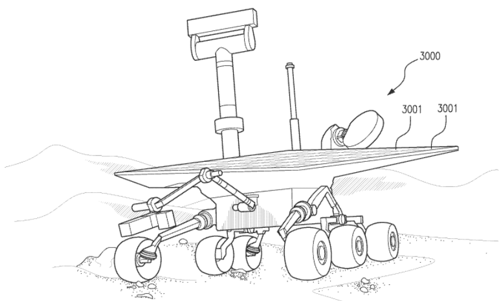
This place covers:
Structural aspects of satellites, e.g. the frames of satellites.
Attention is drawn to the following places, which may be of interest for search:
Body structures common to spacecraft and aircraft |
This place covers:
Spacecraft components which are deployed after launch from a stowed state, e.g. foldable solar panels.
Mechanisms for deploying such components.
Illustrative example of subject matter classified in this group:
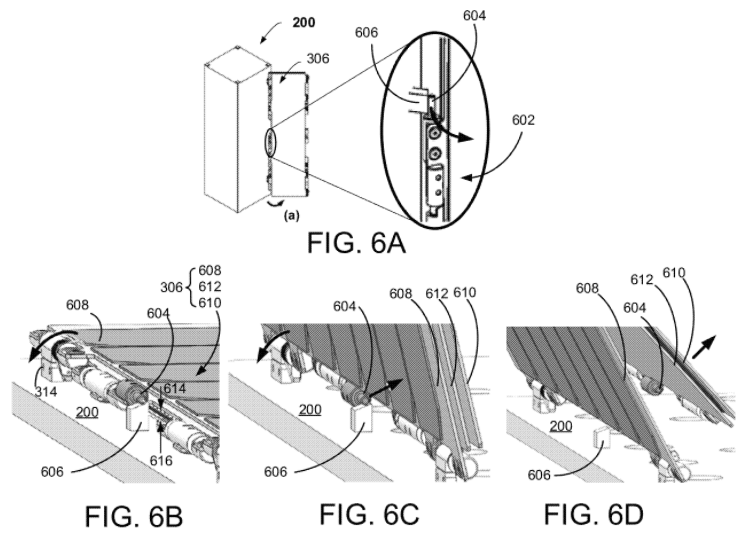
This place covers:
Spacecraft having modular structures or systems.
First illustrative example of subject matter classified in this group:
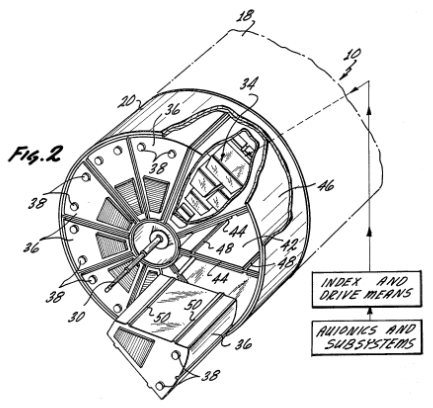
Second illustrative example of subject matter classified in this group:
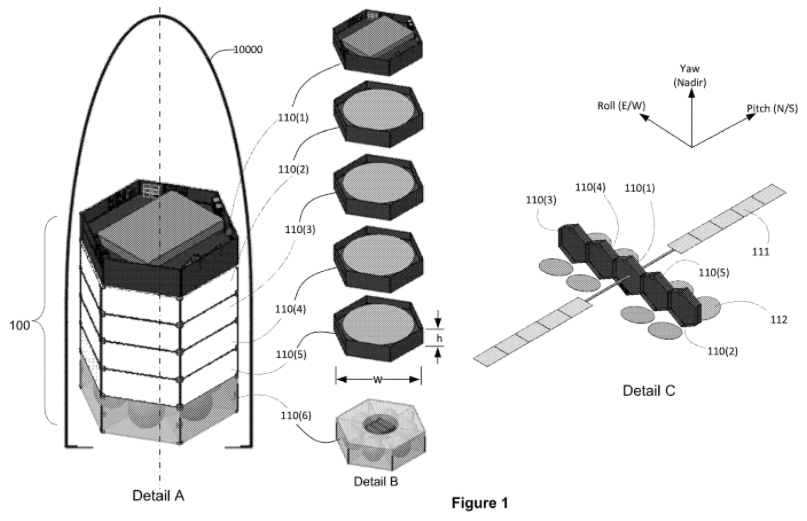
Attention is drawn to the following places, which may be of interest for search:
Coating compositions |
Attention is drawn to the following places, which may be of interest for search:
Vibration damping in general |
This place covers:
- Attitude detection and control.
- Orbit detection and control.
- Position detection and control, e.g. station-keeping.
Attention is drawn to the following places, which may be of interest for search:
Attitude control by solar sailing | |
Tracking space vehicles | |
Jet propulsion plants | |
Navigation or navigational instruments | |
Control of position, course, altitude or attitude of space vehicles in general |
This place covers:
- Control and modification of orbits.
- Transfer orbits during operation or end-of-life.
- Position control, e.g. station-keeping.
In patent documents, the following abbreviations are often used:
HEO | "High Earth Orbit" or "Highly Elliptical Orbit" |
This place covers:
Data processing systems for orbit, attitude or position control.
Mathematical concepts relating to orbit, attitude or position control.
This place covers:
Systems which expel propellant to effect attitude or position control.
Illustrative example of subject matter classified in this group:
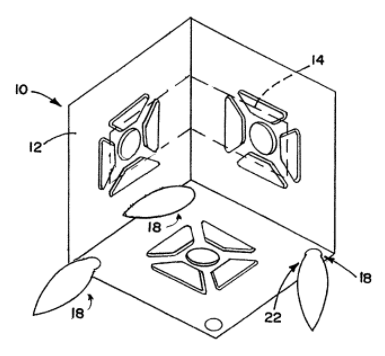
This place covers:
Spacecraft which are stabilised in attitude by spinning about a primary axis.
Control of any such spin.
Illustrative example of subject matter classified in this group:
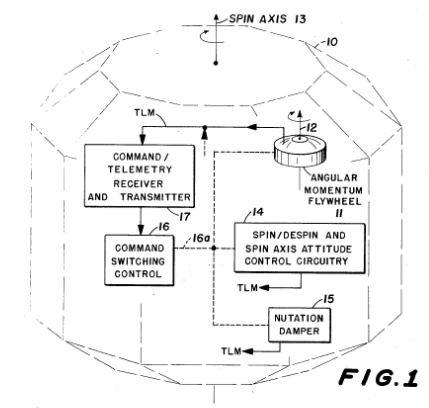
This place covers:
Spacecraft which use rotating flywheels for attitude orientation.
This place covers:
Spacecraft which use rotating flywheels for attitude stabilisaton.
This place covers:
Spacecraft which use gimbaled rotors for attitude control.
Illustrative example of subject matter classified in this group:
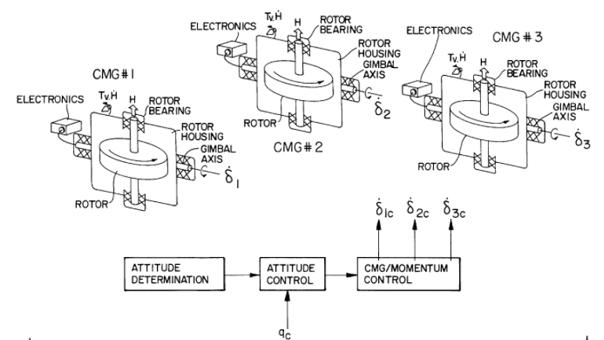
This place covers:
Systems for interacting with the magnetic field of the earth or other celestial body to control orbit, attitude or position of the spacecraft.
Attention is drawn to the following places, which may be of interest for search:
Using sensors for detecting or measuring the magnetic field |
This place covers:
Systems for interacting with the gravitational field of the earth or other celestial body to control orbit, attitude or position of the spacecraft.
Attention is drawn to the following places, which may be of interest for search:
Using sensors for detecting or measuring the gravitational field |
This place covers:
Type of sensor used for position control and station keeping.
Attention is drawn to the following places, which may be of interest for search:
Sensors, per se |
This place covers:
Sensors which detect the position of stars to determine attitude or position.
This place covers:
Sensors which detect the position of the sun to determine attitude or position.
This place covers:
Sensors which detect the position of the Earth or points thereon to determine attitude or position.
This place covers:
Sensors which detect or measure surrounding magnetic fields to determine attitude or position.
This place covers:
Sensors which detect gravitational fields to determine attitude or position.
This place covers:
Damping of oscillations in attitude or position of the spacecraft, often due to external perturbations.
This place covers:
Types of propulsion systems for cosmonautic vehicles and arrangements thereof.
Attention is drawn to the following places, which may be of interest for search:
This place covers:
Propulsion systems using intake air to create thrust.
Attention is drawn to the following places, which may be of interest for search:
Rockets combined with air-breathing jet-propulsion plant |
This place covers:
Spacecraft propulsion systems which use liquid or gaseous propellants, either alone (monopropellants) or in combination (bipropellants).
Air-breathing systems.
Illustrative example of subject matter classified in this group:
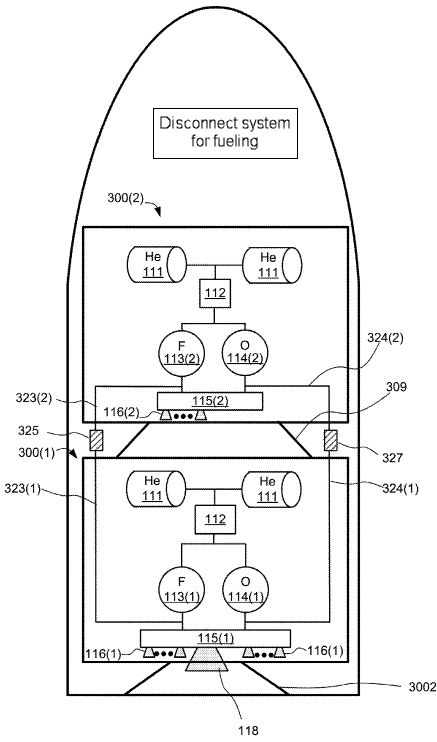
This place does not cover:
Using ions or plasma | |
Arcjets and other resistojets |
Attention is drawn to the following places, which may be of interest for search:
Liquid or gas propellant rockets, per se |
This place covers:
Arrangements for storing and feeding propellants within spacecraft.
Attention is drawn to the following places, which may be of interest for search:
Feeding propellants, per se | |
Means for supplying the propellant | |
Vessels for containing or storing compressed, liquefied or solidified gases |
This place covers:
Arrangements for transferring fuel or fuel tanks between spacecraft in space.
Probes and receivers for fuelling spacecraft in space.
Attention is drawn to the following places, which may be of interest for search:
Maintenance satellites | |
Transmitting power to other spacecraft | |
Refuelling on ground |
This place covers:
Systems which selectively or additionally provide propellant to differing types of thrusters.
Illustrative example of the subject matter classified in this group:
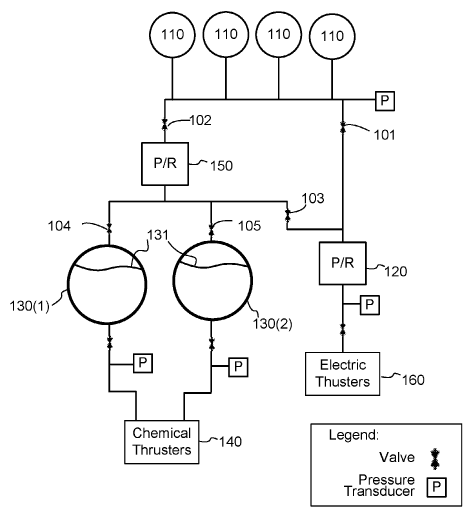
This place covers:
Spacecraft propulsion systems which use solid propellant.
Illustrative example of subject matter classified in this group:
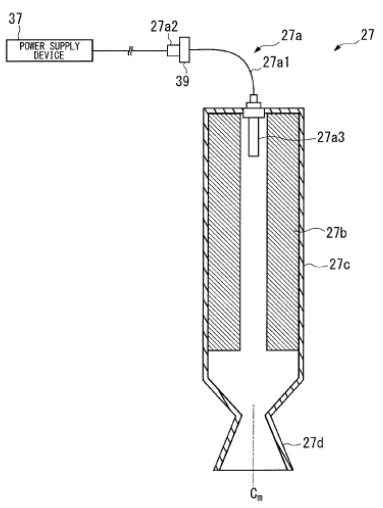
Attention is drawn to the following places, which may be of interest for search:
Solid propellant rockets, per se |
This place covers:
Spacecraft propulsion systems which use a combination of liquid propellants and solid propellants within the same propulsion plant.
Illustrative example of subject matter classified in this group:
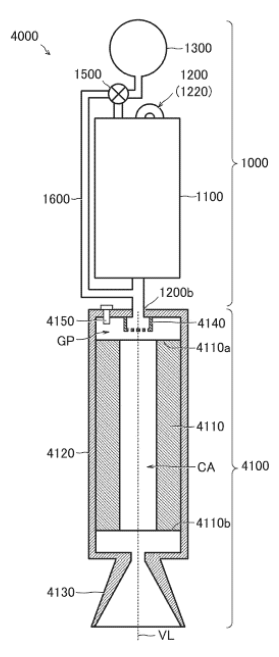
Attention is drawn to the following places, which may be of interest for search:
Hybrid rocket engines, per se |
This place covers:
Spacecraft propulsion which uses radiation pressure, such as by solar wind or lasers, acting upon spacecraft surfaces.
Attitude control using such radiation pressure.
Illustrative example of subject matter classified in this group:
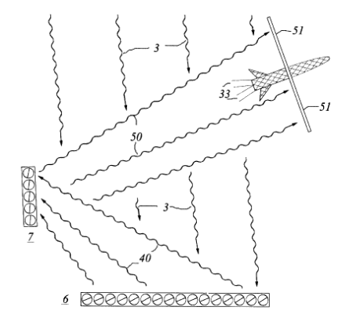
This place covers:
Spacecraft propulsion systems involving nuclear reactions to produce thrust, e.g. nuclear thermal propulsion.
Attention is drawn to the following places, which may be of interest for search:
Nuclear power generation |
This place covers:
Spacecraft propulsion systems without mass expulsion, e.g. using photons or magnetic fields.
Spacecraft propulsion systems which violate known laws of physics.
Attention is drawn to the following places, which may be of interest for search:
Propulsion systems using photons or without mass expulsion, per se |
This place covers:
Spacecraft propulsion which expel ions or plasma (ions and electrons) to produce a reactive propulsive thrust.
Illustrative example of subject matter classified in this group:
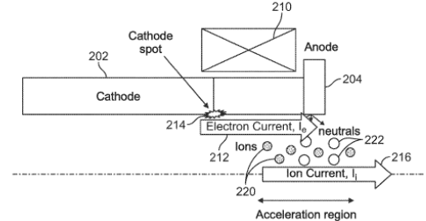
Attention is drawn to the following places, which may be of interest for search:
Ion or plasma engines, per se |
This place covers:
Spacecraft propulsion systems which use an electrical discharge (arc) or other form of electrical heating to heat the propellant to produce thrust.
Illustrative example of subject matter classified in this group:
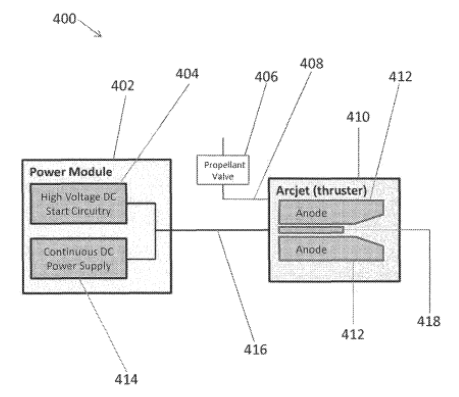
Attention is drawn to the following places, which may be of interest for search:
Arcjets, per se |
This place covers:
Systems which use or interact solely with electromagnetic properties to propel a spacecraft.
Attention is drawn to the following places, which may be of interest for search:
Expelling ions, plasma or the like |
This place covers:
Types of power supply systems for cosmonautic vehicles and arrangements thereof.
This place covers:
Systems for deriving electrical energy from sources other than sunlight.
This place covers:
Systems for deriving electrical energy from nuclear reactions.
Attention is drawn to the following places, which may be of interest for search:
Nuclear spacecraft propulsion | |
Nuclear reactors, power plants |
This place covers:
Systems for deriving electrical energy from the chemical reaction within a generator, wherein the reactants, typically hydrogen and oxygen, are supplied from outside of the generator.
Attention is drawn to the following places, which may be of interest for search:
Fuel cells, per se |
This place covers:
Systems and arrangements in the spacecraft for storing power.
This place covers:
Systems for storing power in mechanical form using rotating flywheels.
Illustrative example of subject matter classified in this group:
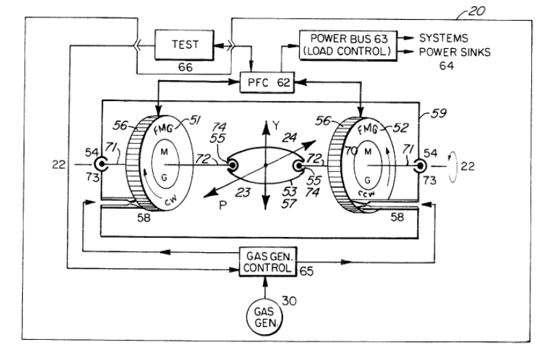
Attention is drawn to the following places, which may be of interest for search:
Flywheel power storage, per se |
This place covers:
Systems for storing power in the form of thermal energy.
Attention is drawn to the following places, which may be of interest for search:
Thermal energy storage, in general |
This place covers:
Systems and arrangements for distributing and regulating spacecraft power.
Spacecraft systems for transmitting space-generated power to earth-based locations.
Attention is drawn to the following places, which may be of interest for search:
Power supply and distribution in general |
This place covers:
Spacecraft systems for transmitting space-generated power to locations on earth or other celestial bodies, or for use by other spacecraft.
Attention is drawn to the following places, which may be of interest for search:
Solar cells per se |
This place covers:
Spacecraft systems and arrangements for deriving electrical energy through photovoltaics, e.g. solar panels.
Attention is drawn to the following places, which may be of interest for search:
Solar panels, per se | |
Solar cells, per se |
This place covers:
Spacecraft systems and arrangements for deriving electrical energy from thermal energy generated by solar energy.
Illustrative example of subject matter classified in this group:

This place covers:
Systems and arrangements for controlling the environmental parameters within the spacecraft, e.g. life-support systems for occupants.
Attention is drawn to the following places, which may be of interest for search:
Space suits |
This place covers:
Arrangements for treating the atmosphere within the spacecraft, e.g. air conditioning or oxygen generation.
This place does not cover:
Arrangements or adaptations of devices for temperature control of environment or living conditions |
Attention is drawn to the following places, which may be of interest for search:
Filtering of particles from gases, waste gas removal or treatment | |
Air conditioning in general |
This place covers:
Systems for regulating the temperature of the spacecraft or of its atmosphere or components.
Attention is drawn to the following places, which may be of interest for search:
Temperature control in general |
This place covers:
Panels, and arrangements thereof, for transferring heat between the spacecraft and the environment.
This place covers:
Systems and arrangements using fluid, which undergoes a phase change, flowing through pipes to transfer heat.
Attention is drawn to the following places, which may be of interest for search:
Heat pipes, per se |
This place covers:
Devices for use by spacecraft occupants for survival in space or returning to earth.
This place covers:
Spacecraft arrangements for protection against ionising radiation, ions or plasma.
Attention is drawn to the following places, which may be of interest for search:
Protection against radiation in general |
In this place, the following terms or expressions are used with the meaning indicated:
Radiation hardening | The process of making electrical components and circuits resistant to damage or malfunction caused by ionising radiation |
This place covers:
Systems for protecting the spacecraft from impacts by natural or artificial space debris, e.g. shielding.
This place covers:
Arrangements for protecting the spacecraft from thermal loads, e.g. insulation.
Attention is drawn to the following places, which may be of interest for search:
Temperature control | |
Thermal insulation in general |
Systems used to shield against thermal loads during re-entry are additionally attributed the symbol B64G 1/62.
This place covers:
Systems and arrangements generally related to the occupancy of persons within a spacecraft, e.g. flight decks or sleeping quarters.
Attention is drawn to the following places, which may be of interest for search:
Arrangements for control of environment or living conditions |
This place covers:
Systems specially adapted for re-entry into the atmosphere.
Systems for slowing the descent into the atmosphere or landing upon a surface, e.g. landing legs.
This place covers:
Devices for reducing or otherwise managing the speed at which a spacecraft descends.
Attention is drawn to the following places, which may be of interest for search:
Parachutes, per se |
This place covers:
Devices for aiding the landing of a spacecraft, e.g. ground contact sensors, or mitigating landing impacts, e.g. cushions.
Landing gear for spacecraft.
Attention is drawn to the following places, which may be of interest for search:
Landing gear, in general |
This place covers:
Systems for coupling spacecraft sections together, or payloads to spacecraft or launch systems.
Systems for joining previously separate vehicles or components into combined vehicles or systems of vehicles.
Systems for separating vehicles or components of vehicles into individual vehicles or components.
Systems for releasing payloads, e.g. satellites from launch vehicles.
Attention is drawn to the following places, which may be of interest for search:
Assembling of space structures |
This place covers:
Devices for coupling spacecraft sections together, or for coupling payloads to spacecraft or launchers, e.g. Marman clamps.
This place does not cover:
Docking systems |
Attention is drawn to the following places, which may be of interest for search:
Means for interconnecting rocket sections |
This place covers:
Systems in which multiple satellites are launched with a single launcher.
Illustrative example of subject matter classified in this group:
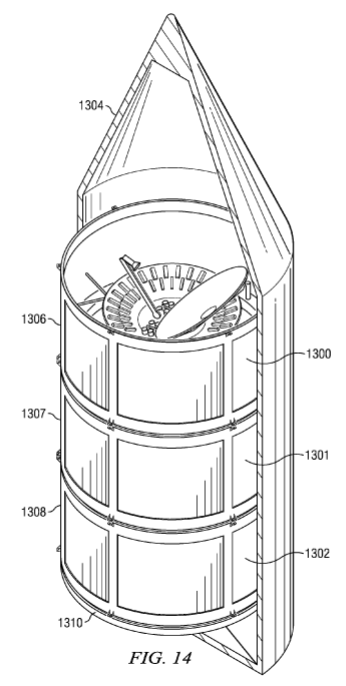
In this place, the following terms or expressions are used with the meaning indicated:
Piggyback | Using the excess space of a launcher to launch additional spacecraft |
This place covers:
Arrangements of satellites in which each satellite may be deployed independently of any other satellite.
Illustrative example of subject matter classified in this group:
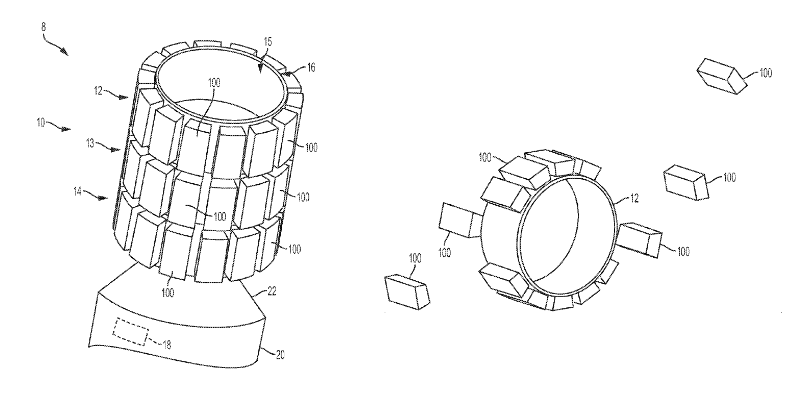
This place covers:
Systems for separating spacecraft sections from each other.
Systems for separating payloads from spacecraft or launchers.
Attention is drawn to the following places, which may be of interest for search:
Equipment for deploying structures between a stowed and deployed state characterised by the deployment actuating mechanism | |
Disconnecting rocket sections |
This place covers:
Arrangements using a charge or other explosive means for separating the components.
Arrangements for burning or melting components to cause separation.
This place covers:
Systems for approaching and joining individual spacecraft with each other.
This place does not cover:
Refuelling in space |
Attention is drawn to the following places, which may be of interest for search:
Satellites for servicing other satellites | |
Rendezvous trajectories, in general |
Systems for clearing space debris are classified only in B64G 1/1078.
This place covers:
Spacecraft systems which are coupled together by tethers.
This place covers:
Antennas, flight deck control sticks, indicators and other equipment specially adapted for spacecraft use, not provided for elsewhere.
Examples of places in relation to which this place is residual:
Adaptations to antennas for use in satellites |
This place covers:
Devices for detecting meteoroids and other space debris.
This place covers:
Observing or tracking spacecraft, space stations or other natural or artificial debris.
Attention is drawn to the following places, which may be of interest for search:
Radio or other wave systems for navigating or tracking |
In this place, the following terms or expressions are used with the meaning indicated:
Ephemeris | Tables, or the collection of tables in books or data files, giving the calculated positions of celestial objects at regular intervals throughout a period. |
This place covers:
Starting towers, fuelling arrangements, transportation devices and other ground equipment for assisting the operation of spacecraft prior to or during launch.
This place does not cover:
Observing or tracking cosmonautic vehicles |
This place covers:
Apparel for use in space.
Attention is drawn to the following places, which may be of interest for search:
High-altitude pressure suits | |
Flight suits |
This place covers:
- Space simulators.
- Training astronauts.
Attention is drawn to the following places, which may be of interest for search:
Simulators for teaching or training purposes |
This place covers:
Constructions of structures specially adapted for use in space, not otherwise provided for.
Moon bases, and the like.
Manufacturing, assembling, maintenance or repairing in space.
Attention is drawn to the following places, which may be of interest for search:
Structural aspects of spacecraft, e.g. frames |